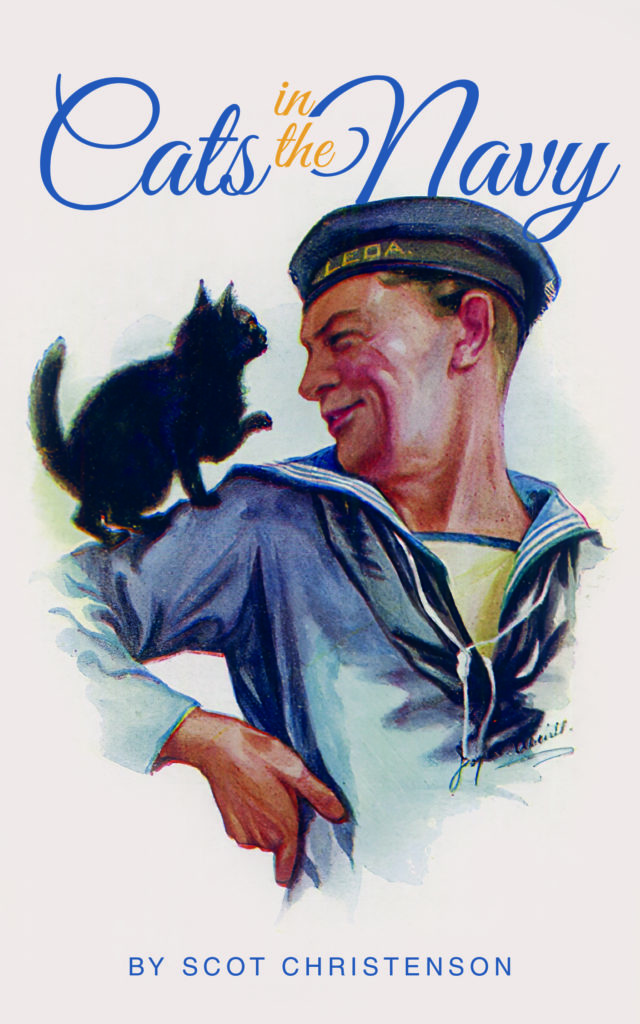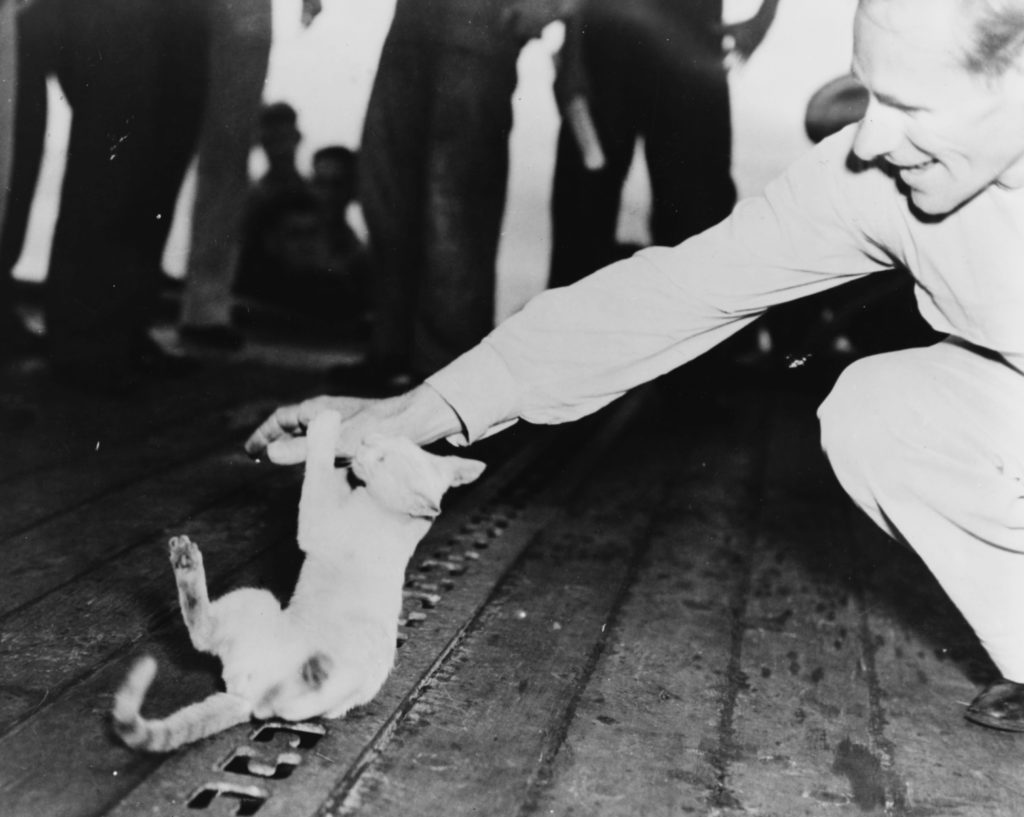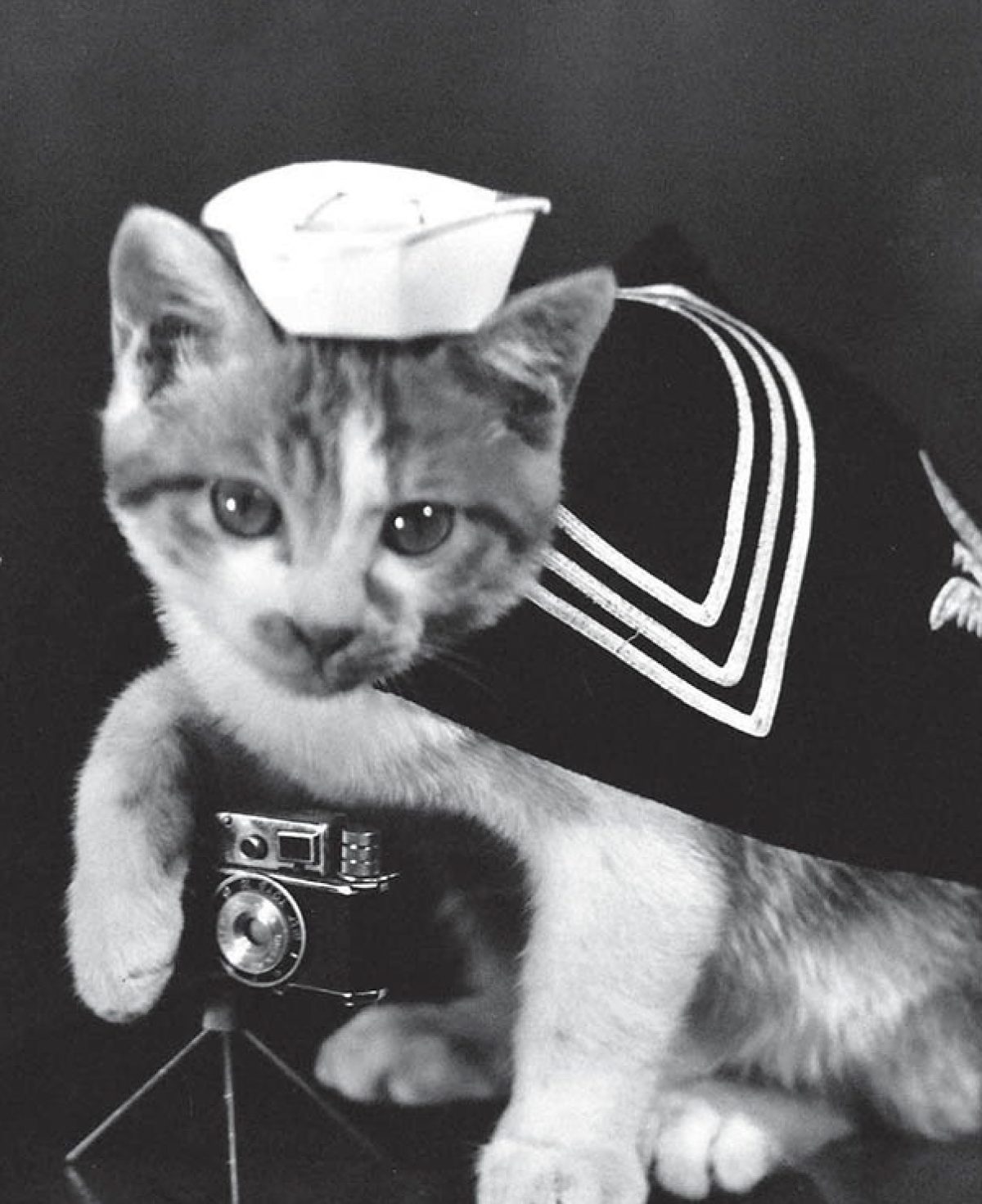What common factor has united sailors across arguably all time periods and countries across the globe? Some might guess tattooing or swearing, but cats might be a better answer.
Yes, cats. Felines aren’t known for a love of water — so it will likely surprise most people that they have a long and illustrious history of naval service. What might be even more surprising is that many cats, known for their domesticity, enjoyed life on the high seas, catching fish and seagulls and lounging in comfortable spots aboard ships.
In his book “Cats in the Navy“, author Scot Christenson, communications director for the U.S. Naval Institute, takes a deep dive into the history of sailing cats — from Nile barges in ancient Egypt to World War II battleships. Sure to be a favorite for cat lovers, the book explores the little-known aspects of felines and naval history.

It also includes probably the largest extant published collection of seagoing cat images. The author’s favorite photo is one of a cat named Bounce, the mascot of the USS Chicago, who was trained by sailors to give a salute.
“Cats were considered to be part of the crew,” Christenson said. “Also when the cats passed away, they were even given burials at sea with full honors just like other crew members.”
Cats were considered lucky by sailors, Christenson said, and were appreciated for their abilities to keep ships free of rats. They were of course also appreciated for their cuteness and companionship, and won the affection of many sailors who served with them. In fact, the crew of the SS Texel refused to abandon their cat after their ship was torpedoed by a U-boat in 1918. The merchant sailors begged the German commander to allow them to rescue their cat Mickey from the sinking vessel. The Germans complied, and Mickey was evacuated in a lifeboat.

The book, which also includes a close examination of the roles of ships’ cats, demonstrates that tough sailors of every variety and description had a soft spot for their whiskered friends, taking them everywhere. Sailors actually contributed to a global cat diaspora — so the next time you celebrate Caturday, thank a sailor.
Aside from looking adorable in miniature sleeping hammocks and proving themselves useful at nabbing rats, cats acquired deeper meanings to many sailors over time, becoming the subjects of reverence and superstition. Black cats, calico cats and polydactl cats (cats with extra toes) are among types of cats considered particularly lucky by some — although photos in the book prove that nobody can resist a bright-eyed tabby.
The book also includes a “Claws of Fame” section containing the stories of various cats in nautical history. Christenson’s favorite is the story of Miss Hap — a kitten rescued during the Korean War by a sympathetic U.S. Marine.

There are no cats allowed on U.S. Navy ships now. Improved technology eliminated the need for manual rat removal and international quarantine regulations resulted in the decline and fall of the sea cat empire. Not to mention the fact that some U.S. government officials didn’t take kindly to Navy officers participating in festivities such as birthday parties and funerals for fuzzy mascots, according to Christenson — “the optics of it” appeared frivolous, he said. (But that didn’t stop beloved ships’ cats from enjoying graceful retirement in Navy offices.)
Aside from ruling their owners’ homes (and the Internet), cats have also turned out to be rulers of the waves. The next time you reflect on naval warfare or the rise and fall of global empires, just remember that behind every great sailor in history was a cat. Probably.

Cats in the Navy
by Scot Christenson, Naval Institute Press
This post contains affiliate links. If you buy something through our site, we might earn a commission.





